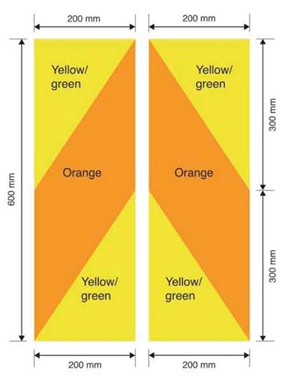Here you will find information about the requirements relating to farm vehicles and forklifts as they present unique safety risks when travelling on public roads.
Many vehicles constructed for use on the farm also need to use the road, for example a rural contractor wanting to move machinery from one farm to another.
An agricultural motor vehicle is designed, constructed or adapted for agricultural purposes and includes:
It does not include vehicles designed or constructed for general road use, for example farm trucks and goods trailers.
An agricultural trailer is used primarily for agricultural purposes. It includes a wheeled agricultural implement, the wheels of which are in contact with the road when the implement is being towed. It does not include logging trailers or those designed primarily to carry goods operated at speeds exceeding 40km/h.
Agricultural purposes include:
It does not include forestry.
A forklift is designed primarily to lift, carry or stack goods using one or more tines, clamps or other attachments. Forklifts are distinct from vehicles that use self-laying tracks.
To drive a forklift on the road you need to have:
the correct licence class for the weight of your vehicle
a forklift (F) endorsement on your driver licence.
To operate a forklift you need to meet the requirements of the approved code of practice for training operators and instructors of powered industrial lift trucks. You can find the code of practice on the Worksafe NZ(external link) website.
Before August 2012, owners of these types of vehicles were required to purchase a road user charges (RUC) licence and then claim back significant portions for off-road running costs. This was a time-consuming and inefficient process and was removed with legislation in August 2012.
As a way to simplify the process while ensuring vehicle owners were paying their fair share for using the road, industry representatives proposed a ‘fast tractor’ licensing fee in lieu of RUC. This new licensing fee was introduced on 1 April 2015.
Fast tractor owners now have a choice of two licences:
The new licence fee is paid in one simple transaction annually, removing the complexity of claiming back on RUC.
A wider range of vehicles may now be driven on class 1 licence (car) and class 2 driver licences.
Find out what driver licence class you need
Agricultural motor vehicles, regardless of age, that operate at speeds exceeding 40km/h must have an annual WoF inspection.
The allowable front overhang has been increased from 3 to 4 metres from the driver’s seat. High visibility paint is an acceptable alternative to hazard warning panels for highlighting front overhangs beyond four metres.
In addition to the widely used hazard panels, new vertical hazard panels, such as below, may now be used. The European Union’s red and white panels remain unapproved.

Pilot vehicles are required for vehicles exceeding 3.1 metres wide and 40km/h or 3.1 metres wide and during hours of darkness regardless of speed.
Up to three oversized agricultural motor vehicles may now travel in convoy as long as they are accompanied by front and rear pilot vehicles.
Category 1 and 2 agricultural motor vehicles are now exempt from travel time restrictions on public roads. They may not travel during periods of unusually heavy traffic volumes.
To make agricultural motor vehicles more visible when operated on the road, one or more amber beacons must be fitted to agricultural motor vehicles registered on or after 1 June 2013. The beacon must be visible for up to 100 metres from the front or rear of the vehicle.
Several variations of work time hours have been introduced to allow the agricultural sector to complete tasks such as harvesting, where time is an issue. These include:
Drivers of agricultural motor vehicles over 18 tonnes or driven in excess of 40km/h are subject to work time restrictions, but those drivers do not have to maintain logbooks if they drive less than 50km on a road in any day.
Find out more about work time and logbooks
Requirements for coupling pins, tow-eyes and safety chains used when towing agricultural trailers have been updated to reflect current practice.